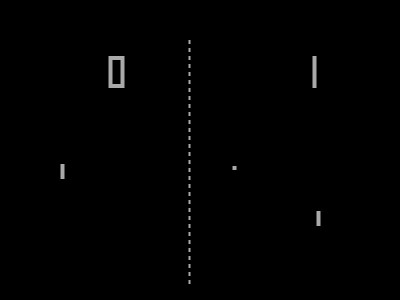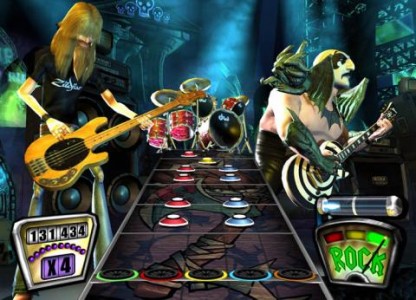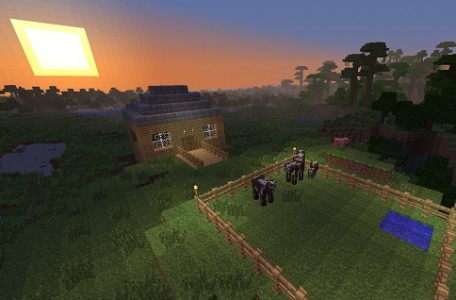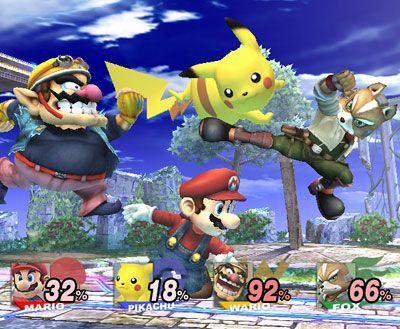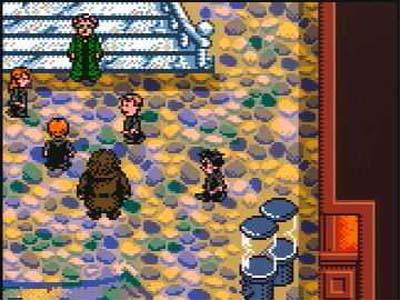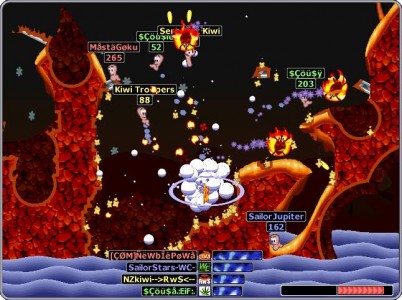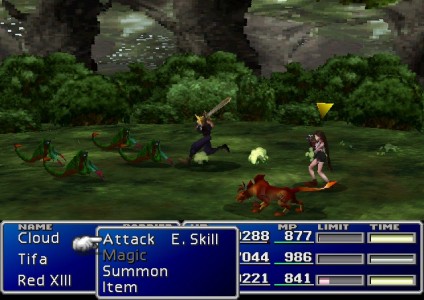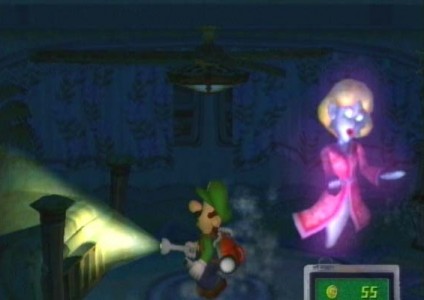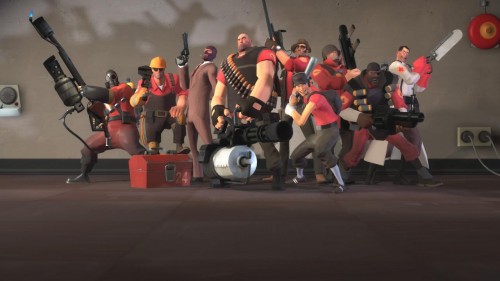Let’s take a trip back in time: right back to the old days of December 2011, when this segment was supposed to be finishing up. What was the world like back then? What games did our ancestors need to play? Has the list changed in the months since?
No. No it hasn’t. But hey, why stop our terrible time travel analogy there. This list contains a trip back to the seventies to one of the first video games, and covers titles across nearly half a century since then. Sink a bit of time into each of these, and you’ll find them a reliable forwards time machine: days might disappear from your life without a trace.
Remember, the games are in no particular order.
To see the games 1 – 10, please click here.
To see the games 11 – 20, please click here.
To see the games 21 – 30, please click here.
To see the games 31 – 40, please click here.
To see the games 41 – 50, please click here.
To see the games 51 – 60, please click here.
To see the games 61 – 70, please click here.
To see the games 71 – 80, please click here.
81. Pong
Platform: Arcade
Genre: Arcade
Year: 1972
It may seem unbelievably simple by today’s standards, but there’s a good chance that most of the games on this list wouldn’t exist without Pong’s influence.
In a virtual approximation of table tennis, one or two players (and in later variations, up to four players) moved a paddle up and down the screen to bounce a ball back and forth, scoring when their opponent failed to return it.
While video games had already existed in some form for more than a decade previously, the release of Pong is often cited as the beginning of the medium as a popular entertainment form. It cemented Atari’s position in the burgeoning video game industry, and inspired other companies to explore these waters, including Konami and even Nintendo. It was one of the first video arcade cabinets to be mass produced, and often outperformed the pinball and other coin-operated entertainment machines of the time.
It might not be as flashy as those new-fangled games you youngsters are used to playing nowadays, but give it a go out of respect for your elders. After all, we owe our hobby, addiction and in some cases, job, to the industry that Pong helped create.
82. Guitar Hero
Platform: Playstation 2
Genre: Music
Year: 2005
Nominated by: Roger Ma
Released back in late 2005, Guitar Hero was a massive hit for gamers and proved to be one of the best party games ever released. Sure you looked a bit silly in front of your friends playing a plastic guitar pretending to be a real rock star, but that was half the fun.
Cranking up Sum 41’s “Fat Lip” or pulling off “Iron Man” by Black Sabbath on Expert, this game was just fun to play for start to finish. The game also introduced gamers to classic rock acts such as Blue Öyster Cult, David Bowie, Boston etc, which if it had not been for this game, they might have been oblivious to.
The massive success of Guitar Hero spawned numerous sequels and spin-off games, but it is the original game that started it all and that’s why you must play this game before you die. Oh the joys of playing with plastic guitar shaped peripherals!
83. Heavy Rain
Platform: Playstation 3
Genre: Drama
Year: 2010
David Cage is pretty vocal about the untapped potential of video games as a medium. His “interactive film”, Fahrenheit (released as Indigo Prophecy in the US), begins with a tutorial where the player is guided by a digital likeness of Cage himself, discussing his hopes for exploring the narrative potential for video games, beyond shooting dudes and jumping on stuff.
His next title, Heavy Rain, developed the ideas further, and due to the focus on narrative and characters, and its minimal use of more “gamey” conventions, its definition as a video game has often been questioned.
Players are cast primarily as Ethan Mars, a father who has lost his first-born son to an accident, and soon discovers his younger son is the target of a serial killer. Gameplay involves moving the character around a scene and interacting with objects or people mostly through movements of the thumbsticks. Action sequences are played out through dreaded (albeit well executed) Quick-Time Events, pressing buttons and performing thumbstick movements in quick succession.
What was most interesting though was the absence of a conventional “Game Over” state: the consequences of success or failure at a task carried over to following scenes. If a character was killed or incapacitated because of a mistake you made, they would be removed from later scenes, where they may have played a crucial role. The scenes you played through, and the ending you received, would vary according to your choices and actions.
Heavy Rain defies standard game genre classification, and its unique interactive cinema style simply must be experienced, as an indication of the exciting direction the medium of video games could be heading in.
84. MineCraft
Platform: PC
Genre: Sandbox
Year: 2011
Nominated by: Jed Bradshaw
In the world of Minecraft, you can build nearly anything you want. A simple search of Youtube for “Minecraft” brings up astounding creations. However, Minecraft is no simple block building game. It has many other elements in. Survival, combat and crafting are all included and essential pieces of this vast universe. Minecraft is so immense that is impossible to describe in just a short paragraph. However, that is good thing, as you should really play it for yourself to appreciate its grandeur.
Minecraft has proved that indie developers can create compelling experiences that capture hearts, and make a nice tidy profit while doing so. Although this has been proved before, Minecraft’s success has been astonishing. After all, it earned most of its support while it was still in beta form. Now that it has been released as a full game, we can expect that it will continue to revolutionize the industry and gaming concepts. If this is what the future holds for gaming, we have every reason to be ecstatic!
85. Super Smash Bros Brawl
Platform: Wii
Genre: Fighting
Year: 2008
What would happen if Pikachu and Yoshi ever got in a fight? Could Link bring down Donkey Kong? And isn’t it time long-term rivals Mario and Sonic fought it out in good ol’ fashioned fisticuffs?
Lovingly referred to as “Encyclopedia Nintendica” in our household, Super Smash Bros Brawl offers Nintendo fans the chance to pit their favourite characters against each other, with arenas, weapons, characters and items drawn from Nintendo’s rich catalogue of game universes.
Every aspect of the game is designed to delight fans. Wanna have Kirby absorb Charizard’s fire-breathing ability, and use it to detonate a Bob-Omb that sends Fox McCloud into range of Captain Falcon’s trademark Falcon Punch, which launches him into the sunset over Hyrule? It can happen.
But it’s more than simple fan service. At the core is a solid fighting game built on unique mechanics. Instead of a basic health bar that depletes as a character takes damage, Smash Bros tasks players with knocking their opponents off the stage. “Health” is measured as a percentage which raises as characters are hit by attacks and external forces. This percentage relates to the likelihood of a character being sent flying off the stage: the higher it gets, the further the character will fly when hit. You never know exactly when you or your opponent will be defeated, so tense matches can ensue with percentages so high you’d think a sneeze would launch them.
I’m normally not really into fighting games, but the looser controls, the interactive environments, the unpredictability of each match due to outside forces, and the inclusion of characters, weapons, environments, and items from every major Nintendo franchise make Smash Bros Brawl the most consistently-played game among my brothers, friends and I. Since its release mid 2008, there is yet to be a space of more than a few weeks between sessions.
86. Harry Potter and the Philosopher’s Stone (GBC Version)
Platform: Game Boy Color
Genre: RPG
Release date: 2001
Nominated by: Roger Ma
Who would have thought that a series of books about a boy wizard would turn out to be such a mega franchise? Harry Potter is a series that is unavoidable, its books turned into movies and eventually turned into video games. And much like all video game based off of the latest hit movie, they are always (most probably) crappy rushed games just cashing in on the hype surrounding the film. However every now and then, a video game is released that defies the odds and is actually worth playing and does the film justice.
Harry Potter and the Philosopher’s Stone for the Game Boy Color did just that.
Due to the physical hardware limitations of the Game Boy Color, Harry Potter and the Philosopher’s Stone did not follow the simple puzzle platforming gameplay found on virtually every other version of the game at the time (PC, Mac, PlayStation, Game Boy Advance, GameCube, PlayStation 2 AND Xbox). Instead the Game Boy Color version was completely different. Harry Potter and the Philosopher’s Stone for the Game Boy Color was effectively a turn based Role-playing game set in Hogwarts. The gameplay was something taken straight out of Final Fantasy and/or Golden Sun and followed the film and novel’s story exactly, which meant that players could play out all the key moments of Harry Potter in the game.
This game was an absolute gem for Harry Potter fans, its sequel Chamber of Secrets for the Game Boy Color, similarly made as an RPG game. Unfortunately, the next games in the series came at the end of the Game Boy Color’s life cycle and all game produced on other platforms afterwards followed the same old puzzle/platforming gameplay. But imagine for a second, if they had released ever single Harry Potter game as a turn based Role-playing game – Now that would have been something.
87. Worms Armageddon
Platform: PC/Playstation/N64
Genre: Strategy
Year: 1999
Nominated by: Michael Irving
In high school, my group of friends used to solve all our arguments with a round of Worms. It was a lengthy process, and by the end we often couldn’t remember what we were debating in the first place, but it was a sound system nonetheless.
The squishy, adorably-homicidal worms had been slaughtering each other and solving our arguments for years prior to Armageddon, but with each iteration the characters gained more personality, the weapons grew zanier, and the strategies deepened. Many feel that Armageddon and World Party marked the pinnacle of the franchise’s 2D ventures, before it tackled the dreaded third dimension a few years later.
Worms gameplay consists of two or more teams of the titular invertebrates, dotted across randomly-generated 2D landscapes, with the intention of wiping each other off the map using a variety of wacky weapons, including dynamite, bazookas, banana bombs, explosive sheep, and dithering old women.
There are plenty of single-player options, including a campaign, training modes, practice matches, special weapons challenges, and so on, but the real drawcard of the series is its multiplayer. Same-screen multiplayer is somewhat understated in today’s online world, but back in the day, half the fun was trash-talking and taunting your mates right there in the room with you. Multiplayer Worms matches deliver a healthy mix of skill and luck, meaning that noobs and pros can play together without the winner being pre-determined.
The fun was exacerbated by the cartoony art style and the air of light humour that permeates every aspect of the franchise, making it nigh on impossible to play without a big smirk on your face.
While we chose Armageddon as the figurehead of the series, any version is worth a try. Team 17’s flagship series has wormed its way onto just about every platform on the market now, so it shouldn’t be hard to wrangle up a copy somewhere.
Give it a go with friends, in the same room. Trust me, there is no greater gaming satisfaction than watching your mate’s face, as you gently prod their last worm off a cliff.
88. Final Fantasy VII
Platform: Playstation, PC
Genre: RPG
Year: 1997
Nominated by: Josh Spudic
If there is a RPG that makes the world talk, it has to be Final Fantasy VII. It was the ice breaker for Japanese console RPGs in the Western market. It was also the first of the series to be released in the European and PAL territories (which does include Australia). Why is it, then, that no one can be quiet about it? It might be the combat system in place. It could be the epic soundtrack, including one of the best villain themes of all media, One Winged Angel. Speaking of characters, the heroes of this tale are memorable and have great followings. It might also have one of the most shocking scenes in video game history.
Whatever it is, no one can deny the impact of the game. I mean, the fact that people debate on how much of an impact the game has tells one the heights it reached. Without Final Fantasy VII, there would be no Final Fantasy series in the West. Yes, that is a big claim.
89. Luigi’s Mansion
Platform: Gamecube
Genre: Puzzle? Adventure? Hard to define, really
Year: 2001
Nominated by: Michael Irving
Nintendo can be reasonably accused of milking formulas. But hey, when the formula is as solid as most of theirs are, people are usually willing to forgive them.
But Ninty are just as well known for innovation, and when they do take their IP to new places, it’s almost always with fantastic results.
With the Gamecube’s token Mario game coming a few months after the console’s launch, Luigi’s Mansion filled the initial first-party void, surprising gamers with an adventure unlike anything else in the Mario franchise.
It plays a lot like the original Resident Evil, with a focus on solving puzzles, to find keys, to unlock doors to more puzzles. As Luigi, equipped with a flashlight and a modified vacuum backpack, players wander a spooky old mansion in search of Mario, clearing the ghostly residents out of each room to proceed. Basic ghosts appear in the dark, and must be stunned with the torchlight, fought like fish on a hook, and finally schlooped up into the vacuum – gameplay that would re-emerge in the 2009 Ghostbusters game.
Many rooms had special ghosts, which were a bit of a puzzle to capture. Before you can catch the fat ghost in the dining room, for instance, you had to vacuum up the food on his plate, and stop the waiter ghost bringing more. Figuring out these kinds of puzzles made up much of the game.
Sure, it was quite short and not too difficult, but it was such a deviation from Nintendo’s well-trodden territory that it struck a chord with gamers, eventually ranking in the top five best-selling games on the Gamecube. A belated sequel is on its way to the 3DS, but it’s definitely worth a trip to the original.
90. Team Fortress 2
Platform: PC/Mac/Xbox360/PS3
Genre: Multiplayer FPS
Year: 2007
Team Fortress 2 is a fascinating creature, showcasing finely-balanced gameplay, a clear and quirky visual style, strong elements of humour, and somewhat experimental business models and cross-media integration.
The multiplayer cornerstone of Valve’s near-flawless track record, Team Fortress 2 is at heart an objective-based, competitive team game, but it’s deeper than most. It avoids the well-trodden turf of realistic visuals and physics in favour of something lighter, and brings with it a sense of humour absent from the gaming majority. Each of the characters have more character than a sackful of other gaming personalities, evident in dialogue and most notably in the “Meet the Team” videos.
Many competitive games can be dominated by one particularly skilled player, who can carry their team to victory with little input from teammates (I’m looking at you, Battlefield and Call of Duty). Team Fortress 2 earns the right to stick the word “team” in its title: the nine character classes are balanced just right to ensure ongoing cooperation between members. With each character having distinct advantages and disadvantages against each other, a successful team requires an even spread of classes and strong camaraderie.
But it’s not just the content of the game that earns TF2 a place on this list – Valve has often used it as a platform for experimentation. Even five years after release, the studio’s continuous support for the game has transformed its business model from a “product” to a “service”. In essence, you don’t own a copy of TF2, you use its ongoing services. The game became free to play in 2011, with micro-transactions used to purchase certain in-game items. It’s even been used to promote other games: achievements earned in Valve games like Left 4 Dead 2 and Alien Swarm, and even in third-party games like Worms and Sam & Max, can earn you hats or weapons in TF2.
Team Fortress 2 has a rabid fanbase, due to its solid gameplay, eccentric style, rich characters and experimental nature, and it will be interesting to see which elements will be adopted by future games.


